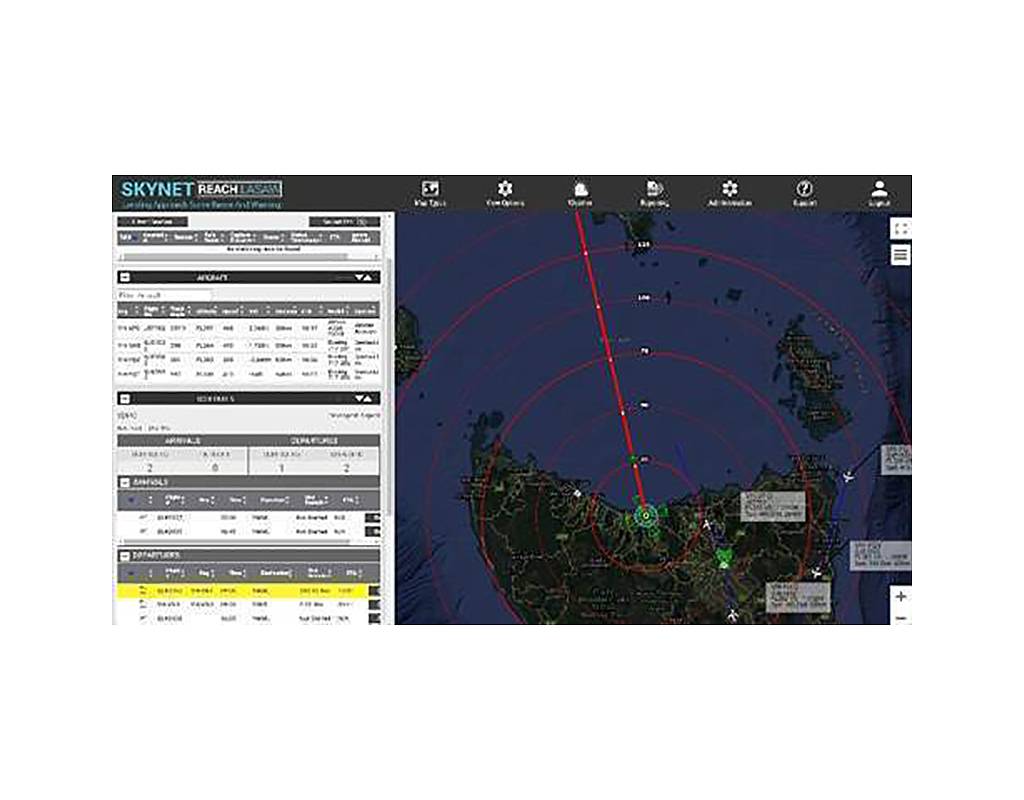
SkyNet Aviation, the leading global specialist in mid-size fleet aviation technology solutions, has announced the launch of the world’s first AI-enabled, ground-based technology to provide 24/7 alerts of wrong deck landings (WDL) and wrong surface landings (WSL).
Specifically developed for helipad and airport operators, including cluster helipads and remote and unmanned airports, REACH LASA is an effective and affordable solution to the under-recognized, but potentially life-threatening, safety issue of unscheduled or unannounced aircraft landings.
LASAW (Landing, Approach, Surveillance, Warning) provides early warning and detects any aircraft in a landing configuration, tracks its approach and automatically triggers a series of audio and visual alarms to clear a landing site of personnel, equipment or wildlife and prevent damage or injury.
The unique technology, developed over several years at SkyNet Aviation’s headquarters in Brisbane, Australia, can:
- Monitor up to 500 aircraft at up to 1-second intervals in a detection range up to 260 nautical miles/480km
- Monitor and display all long-range inbound flights Flight planned to the Destination
- Analyze and detect all other airborne traffic to provide approach warnings up to 10 nautical miles/20km or more pre-landing notification
- Trigger ground alerts (sirens, strobe lights, automated two-way radio announcements etc.)
- Create custom no-fly zones for alarms and recording aircraft details and operator
- Log all landing approach events, time on ground logs with aircraft type and operator information
- Can also be programmed to ignore known activity, such as training circuit flights
“This is a real industry gamechanger,” explains Jon Davis, SkyNet’s founder and CEO. “LASAW will have a major impact on the prevention of this very significant safety issue which is widely recognized – particularly by pilots who operate around platforms in the oil and gas fields, FPSOs and in remote areas – but is not well documented. WSL can also be a problem at any airport and I’m glad to see that for 2021, some key safety organizations are at last recognizing the potential dangers. Until LASAW, there has been no dedicated technology solution available to manage this potential danger.
“During the development of this product, we spoke to pilots, landing site operators and safety organizations around the world, all of whom had personal or anecdotal evidence of just how often pilots, for many different reasons, can approach the wrong landing site. It’s not as unusual as you might imagine but not every WDL or WSL is recorded.”
Until now, action to try and prevent these occurrences, particularly at offshore platforms, has usually relied on the pilot to visually identify the correct landing zone. Typically, this is aided by Satellite tracking information every 15 seconds. LASAW, using ground-based ADS-B technology, has access to position updates broadcast from aircraft up to twice per second, offering far greater position resolution and high-speed computing algorithms to determine if a potential landing conflict is present. Now airport, rig and FPSO operators can play a major role in averting potentially dangerous situations and make their landing environments safer.
One organization which has been trialing LASAW is Devonport Airport, owned by the Tasmanian state government Ports Corporation. The airport wanted pre-landing alerts to provide warnings for ground maintenance teams, such as maintenance, refuellers and baggage services.
“Devonport is a progressive regional airport, where safety is a key consideration, and LASAW has been developed specifically for our size of operation,” explains Dave Race, Devonport Airport’s general manager. “Devonport Airport was part of the early testing and proving phase of the system and since its initial installation, we have provided end-user feedback which Skynet Aviation has incorporated into the system.”
For airport operators such as Devonport, the LASAW system now extends to monitoring of long-range inbound flights well beyond LASAW’s detection range and aircraft once airborne from their departure point. LASAW can access the global Aeronautical Fixed Telecommunication Network (AFTN) to display these flights scheduled to arrive at the LASAW destination, no matter the distance. Once within detection range, these aircraft are monitored at up to 1-second intervals. Equally, Departures can be monitored to their completion outside of LASAW’s range.
“Providing advanced accurate arrival information for Aerodrome Reporting Officers at key inbound points is proving extremely useful,” explains Race. “In addition, we use the system to assist in our verification of aircraft using the airport for billing purposes or account queries. LASAW has added another layer of operational efficiency and safety to our airport operations.”
This press release was prepared and distributed by SkyNet Aviation.

